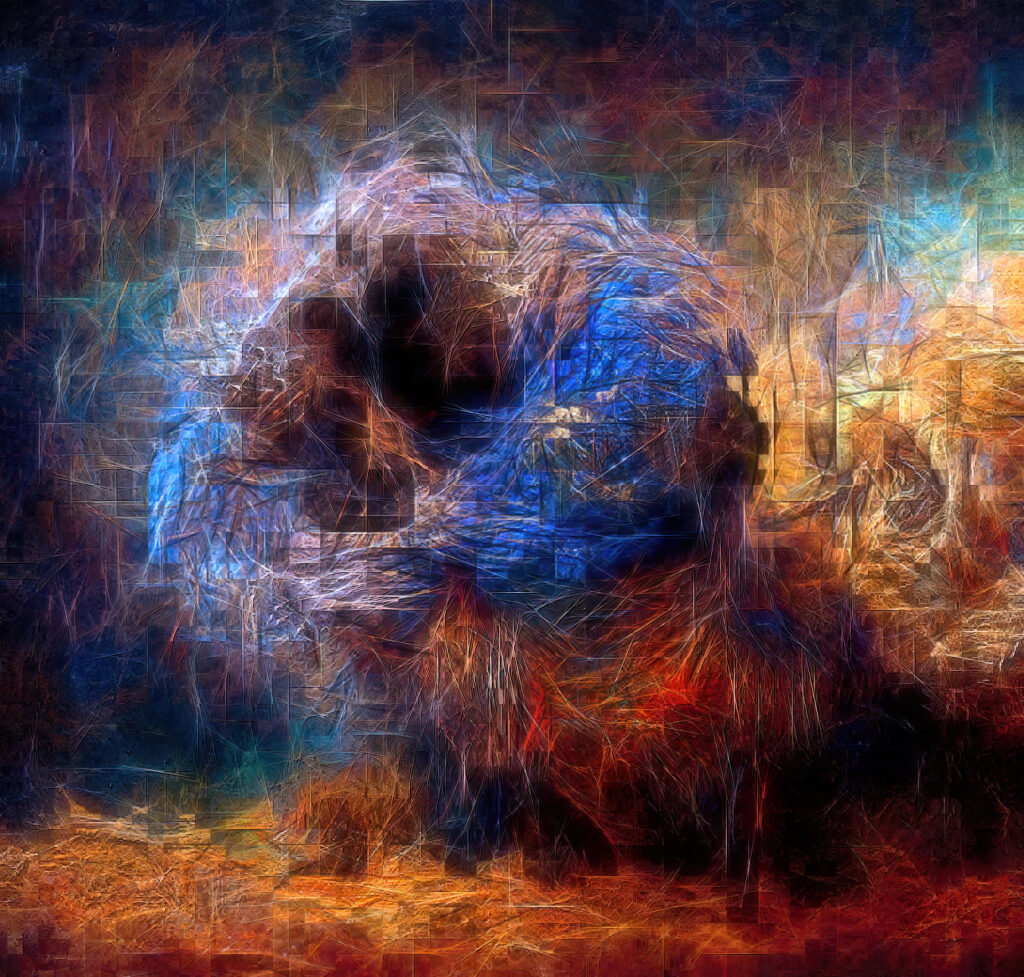‘Aberrant Creativity’ Exhibition Examines Relationship Between Art And Artificial Intelligence
Creative uses of artificial intelligence in the process of making art is the subject of a new exhibition titled “Aberrant Creativity: Unusual Partnerships Between Humans and Machines,” which opened Tuesday at the Arts Council of the Brazos Valley.

Creative uses of artificial intelligence in the process of making art is the subject of a new exhibition titled “Aberrant Creativity: Unusual Partnerships Between Humans and Machines,” which opened Tuesday at the Arts Council of the Brazos Valley.
The exhibition is a collaboration by the Institute for Applied Creativity in the Texas A&M College of Performance, Visualization and Fine Arts and the Arts Council. It continues through Dec. 21. An opening reception is Dec. 7 from 4:30-6:30 p.m.
The exhibition attracted creations from across the globe. Twenty-eight pieces were selected among 225 submissions. Works by three invited AI artists — Lev Manovich, Steve DiPaola and Eunsu Kang — are a part of the event as well. One Texas A&M student — Visualization major Claire Thessen — was selected for her piece titled “Circulation.”
Caleb Kicklighter, instructional assistant professor and one of the judges for the show, said the rise of AI-generated art has made many artists uneasy about what is to come. The exhibition is a chance for participating artists to respond to these changes, he said.
“We have a wide variety of submissions, and almost every single one of them is a product of interacting with some kind of machine-learning algorithm or tool to help with the creative process,” Kicklighter said. “We have digital works that were printed and hung in the gallery, time-based sound and video work, and even a few virtual interactive pieces.”

The exhibition aims to explore the boundaries between machines and humans, said Dr. Jinsil Hwaryoung Seo, director of the Institute for Applied Creativity. Artists can examine ways to challenge AI into a creative partnership, or interpret its representation in unconventional ways, she said.
“With AI in general, many people think a machine created the artwork, so it doesn’t or won’t look like human art,” Seo said. “But many artists use AI as part of their practice, and it has a lot of various layers or ways of expressing the artists’ narratives.”
Submissions for the exhibition were required to be original works created in collaboration with AI, or that explored the relationship between humans and AI in the creative process. These included virtual-, augmented- and mixed-reality works, 360 videos, print work, 2D and 3D digital works, time-based works and installations.
Five judges will select one finalist for best in show, along with aesthetics, creative process, innovation and best student work. Winners will receive $250, while best in show earns $500. All artist awards will be presented during the Dec. 7 reception.
Seo said the exhibition attracted work from artists in 12 states, along with the United Kingdom, Canada, Taiwan and China. Of the selected pieces, 71% were from professionals, 18% were from students and 11% were from emerging postgraduate students, Seo said.
Kicklighter described an interactive piece that uses an iPad and microphone that guests can interact with, which causes images of 3D printed objects to be projected on the wall. Another showcases a combination of AI with older technology by utilizing a slide projector from the 1950s. A physical nutcracker featured in the exhibition came from an AI-generated image that was 3D modeled, sculpted and printed.
Emily Bujnoch, instructional assistant professor in the Visualization program, is featured with her sculpted piece titled “/chimera.” She described it as a product of “exploring the parallels between mythological creature design and the generation of digital imagery using artificial intelligence.”
Seo noted that some artists utilized AI aiming to break its boundaries through the creative process, but that the submissions consistently prioritize art.
“I really hope this exhibition inspires artists and art students to learn about how other people utilize and create artwork alongside AI,” she said.
“Aberrant Creativity” continues through Dec. 21 at the Arts Council of the Brazos Valley, 4180 Texas 6 Frontage Road. An opening reception is Dec. 7 at 4:30 p.m. Gallery hours are Tuesday-Friday from 10 a.m. to 6 p.m. and Saturday from 1 to 4 p.m. Closed Sunday and Monday. A virtual twin of the exhibition will be hosted online in 2024.
Top photo: Emily Bujnoch, instructional assistant professor, is featured with her sculpted piece titled: “/chimera.”